The semaphore signal is raised, and Direct Rail Services 47802 Spirit of Cumbria pulls away easily from Great Yarmouth at 1008. Next stop: Norwich.
A familiar scream comes from the engine room behind me as Driver Ian Drake applies power and the locomotive gets to work - the trailing Class 90, eight Mk 3s and Mk 3 driving van trailer are not a taxing load for the locomotive. The ‘47’ will be detached at Norwich, and the ‘90’ will continue as the 1100 departure for London.
This is the first of four passenger trips 47802 will make between the Norfolk coastal resort and Norwich (it will also operate two empty coaching stock moves), and is the only Class 1 (express passenger) work booked for a ‘47’ in the UK.
This is some downturn for a class which had, at one point, more than half of the 512 locomotives constructed available for passenger duties, but then the first Class 47 did enter traffic 47 years ago. Of 512 built, 29 remain available for traffic.
Last year saw two summer Saturday passenger duties booked for ‘47’ haulage. East Midlands Trains hired West Coast Railways Class 47s to run between Nottingham and Skegness, while National Express East Anglia (NXEA) used a Cotswold Rail ‘47’ for the London-Yarmouth trains that are diesel hauled between Norwich and the coast.
The last daily passenger diagram was with ‘one’ (now NXEA), between Norwich and Great Yarmouth when a London-Norwich train was extended to the coast as part of the franchise agreement. This saw poor passenger loadings, however, and was replaced by a three-car Class 170 Turbostar in September 2005.
Brush Type 4s, as they were known when first delivered, were a mixed traffic design. But passenger duties were never far away, and while they have proven to be an exceptional workhorse, they were not always the most popular with enthusiasts, as electric train heat (ETH) fitted Class 47/4s were found pretty much everywhere.
Nor were railway managers keen on the locomotives, especially after privatisation, with Edward Burkhardt (then at EWS), and Chris Green (then at Virgin Trains) both suggesting they would not be unhappy to see the back of these locomotives. Back then this was probably true, as they were proving unreliable compared with what the private railway required. But they were more than 30 years old, and were being hammered on daily long-distance duties. The VT examples were travelling at high speed across the UK on long-distance passenger work, while Burkhardt’s fleet, which totalled more than 100 when he took over EWS, were used on heavy freight traffic including cars and trains for the Channel Tunnel. ETH Class 47s were used on the parcel network.
EWS withdrew its ‘47s’ as Classes 66 and 67 were introduced, while VT removed the last from its CrossCountry franchise in 2002. VT did continue using the Type 4s on the North Wales coast line, where they were joined by EWS examples hired to First North Western, which used ‘47/7s’ on Birmingham New Street/Manchester Piccadilly-Holyhead trains.
While all this was going on, a pocket of Class 47 operation remained in East Anglia - the Norwich-Great Yarmouth route continued using ‘47s’ on summer Saturday trains.
For many years they were provided by EWS, with a ‘47’ used on the previous evening’s Willesden PRDC-Norwich parcel train visiting the coast the following day. This finished in 2001 when EWS lost the hire contract to Cotswold Rail, and for the next six years the spot-hire firm supplied Class 47s first to Anglia Railways, then ‘one’ and finally National Express East Anglia. They were also used as standby locomotives.
Until 2005 the train only worked at high-peak summer periods (late July to early September). But NXEA spokesman Peter Meades explained that the trains now start in May, as Great Yarmouth has a high volume of visitors for the May bank holiday. Its regular hosting of events at its numerous holiday camps means the trains are also often busy outside the main peak season. Mondays and Fridays are similarly busy and station staff at Yarmouth would welcome the use of locomotive-hauled trains.
This year CR gave way to DRS, the first contract the latter has won with a train operating company (TOC). NXEA Deputy Area Operations Manager Adrian Mann told RAIL that the reliability offered by DRS was one reason why NXEA started using DRS locomotives. “They look smart, and they really take care of their locomotives,” he said.
Cotswold Rail has provided locomotives for the past six years, but Mann said reliability problems were beginning to affect the fleet, while CR Managing Director Adrian Parcell has also admitted to RAIL that some of the ‘47/8s’ were becoming “tired”.
As part of the contract with NXEA, DRS
supplies three Class 47s - one is in maintenance, while the other two are available for traffic. So far 47501 Craftsman, 47802 Spirit of Cumbria and 47832 Solway Princess have been used. On June 27, 47501 was at Crewe for a B-exam, so 47802 was used on the trips to
the coast. 47832 was stabled at Norwich station.
“The ‘47s’ are a good workhorse. They are reliable, and I like them. They can go anywhere,” says Mann. It seems there is quite an affection for the ‘47s’ for both Drake and Mann. Both learned to drive using them, while Drake spent many years driving them when based at Stratford.
Mann no longer drives, but Drake is one of 16 mixed traction drivers on NXEA’s books. They are passed to drive all trains within the NXEA fleet, and are based at Norwich Crown Point. Some days they will drive the ‘47’ on its standby duty, other times they will drive a mainline express followed by a rural service. Drivers will also get one trip to Great Yarmouth, which allows them to retain traction and route knowledge. It is for the latter reason that a ‘47’ is sometimes used to ‘haul’ a mainline express even if it has not failed.
The NXEA Saturday Class 47 diagram starts at Norwich Crown Point after the ‘47’ has been prepared for the day. It will couple to a rake of Mk 3s and ‘90’, and set off empty for the coast, running non-stop via Reedham. Mann explained that for operational reasons it is easier to haul the ‘90’, because it saves time once the train arrives at Norwich. The train also runs empty to prevent complicated shunting at Norwich when capacity is an problem.
Climbing in the cab of 47802, it is quickly apparent how clean this locomotive is. Taking my position in the secondman’s seat, I watch as Drake ‘gets the road’ and applies power. We are off. To my right, some depot staff are watching the departure, with one taking pictures. “It’s good to see that,” says Mann. “It shows the staff have pride in the train.”
This service is very rarely cancelled, and then only if something is seriously wrong. On the first weekend of this year’s services, 47501 failed before departure, so 47832 substituted.
DRS leases the locomotives to NXEA, and the latter maintains and crews them, although DRS does supply a fitter as required. Any major attention required, or routine exams, sees the ‘47’ return to the North West.
As the ‘47’ eases its train through Whitlingham (to the east of Norwich, where the Sheringham line diverges), Mann explains that the maximum speed permitted for the train is 50mph. This is mainly down to gauging - there are concerns that the Class 90’s pantograph may bounce and hit bridges. Some of the clearance along the route is also quite tight for the pantograph.
A speed restriction is also in place at Postwick, near Norwich, where locomotive-hauled trains cross a small rail over road bridge at 20mph because of the condition of the bridge, although Mann says Network Rail is looking to raise this speed limit. It is also a good time for Drake to undertake a brake test. Everything is fine so far.
“You will see plenty of photographers,” he says as we pass the first at Brundall Gardens. “People come out every week to take pictures of this train.” It’s true, my email inbox often has submitted images of the train, while when living in Great Yarmouth I used to regularly travel on, and photograph, this working.
Power is applied again east of Brundall, and the ‘47’ is screaming as we make for Reedham. Here the line to Lowestoft heads right, while we take a single-line route to Yarmouth via Berney Arms. Reedham is a pretty station with its station foliage, semaphore signalling and bridges. There is a restriction here again, but soon Drake is back on full power and the ‘47’ is charging towards Yarmouth.
Once at the coast resort we pass Breydon Water on the right, while on the left is the line from Acle. This is a unique situation as two separate lines enter the four-platform station, yet there is no crossover between the two routes until the pointwork on the station approaches.
We pass the overgrown remains of the once very busy carriage sidings. “I remember coming here when they were full of locomotives and carriages,” Drake reminisces. More photographers are gathered to await our arrival, despite the gloomy weather. In the background Yarmouth’s flood siren is being tested.
Once at the station, I hop from 47802 and watch as it is uncoupled and runs around its train. A depot driver accompanies the train, riding on the carriages on the ECS, and he will operate the points in the platform allowing the ‘47’ to run around.
The driver will contact Yarmouth signalbox once he has thrown the levers in the station, and this allows the locomotive to run around its train, before reversing back onto it, and pushing it back into the station. Once this is complete the guard will put reservations on it, and passengers can board. Today there are about 100 holidaymakers, as well as several people here to ride behind the ‘47’, something NXEA acknowledges and welcomes.
But this is not a case of playing trains - this train has a sound business case for operating. NXEA has made it widely known that its diesel multiple unit fleet is light on numbers, thereby restricting some of its flexibility. A ‘47’ hauling eight carriages offers far more seats, allowing NXEA to make the most of the seaside resort.
Meades believes this year could be very interesting, as the recession means that more people will be holidaying in the UK. Will this mean a renaissance for Yarmouth?
He also would not rule out the possibility of another ‘47’ being used, possibly two in top and tail fashion, if peak summer capacity required it, although this is only likely if a DMU is out of traffic for a long-period. But it has happened before - as recently as 2005, one CR ‘47’ would haul Yarmouth-London trains to Norwich, while top and tail CR ‘47s’ were used on local services between Norwich and London. This often saw non-heat fitted ‘47s’ used, with 47200 and 47316 often in action.
After the 1008 departure leaves Yarmouth, it is back via Reedham. Only the 1418 Norwich-Yarmouth and 1540 ECS to Crown Point run via Acle, this being due to pathing on the Reedham route.
The ‘47’ makes light work of its trailing load, which Drake reckons is about 500 tonnes. We slow as we approach Reedham, with a Class 156 crossing in front of us heading for Lowestoft. Soon the semaphore is raised, Drake gets 47802 working again, and we roar through Reedham, pass another photographer and cross the marshy flat broadland scenery.
It is amazing how even people at platforms who are not enthusiasts watch as we pass through stations, with observers at Brundall and Cantley. As we enter Norwich, Crown Point is to the left and again staff are out taking pictures of the train.
We enter Norwich and DRS 37602 and 47832 are visible, as well as a large number of enthusiasts awaiting our arrival. From here, 90009 will take the train to London, while Drake will put 47802 in the reception sidings and await the arrival of the 1000 London Liverpool Street-Great Yarmouth. There are delays on the Great Eastern Main Line today, but that does not stop 90013 propelling its train into Norwich on time.
There is a scrum to take pictures as 47802 reverses onto the ‘90’, which by now has dropped its pantograph, and at 1206 we are away heading for the coast. I am travelling on the train this time, and it is noticeably busy. Again, there are a large number of enthusiasts, but I reckon that a two-car Class 156 would struggle with the load. In the high summer it becomes a lot, lot busier.
This is also the train that NXEA believes is the busiest of the four ‘47’ passenger services, with the return, the 1310 Yarmouth-London Liverpool Street, the busiest from the coast. This, it believes, is due to the time holiday camps want holidaymakers away from their facilities.
It is distinctly quieter this time, with no screaming ‘47’ to be heard, but we are rattling along. Drake is at the controls again; indeed he will drive all six trips.
Once in Yarmouth 47802 will run around again, and we are off, on time with the 1310 for London. This train is indeed busier than the previous trip, with a good load on board. At Norwich even more heading for London board the train, and as soon as it leaves at 1400, the ‘47’ is released and drops onto 90001, which it then hauls to Yarmouth as the 1418 departure (the 1200 from London). It departs three minutes late, but I have left it by now.
Once the ‘47’ reaches Yarmouth its passenger work for the day is done, and it will haul the ‘90’ and its train back to Crown Point, although today due to 90010 and 90011 failing in traffic, the set used is returned to Norwich and returns to London with the 1630 to London Liverpool Street.
Having travelled on this train many times over the years, it is fascinating to see how it operates. It is also pleasing to hear that the staff appreciate the usefulness of the old workhorses, and how they enjoy working with them.
Each year the rumour mill suggests it will be the last time they are used, and each year NXEA refuses to comment until a contract is signed. What about 2010? Well, again NXEA is tight-lipped; suggesting that the contract signed with DRS is long-term, but that the Yarmouth’s are a rolling contract.
I suspect that ‘47s’ will be running to Yarmouth next year, and I suspect I will be there again.

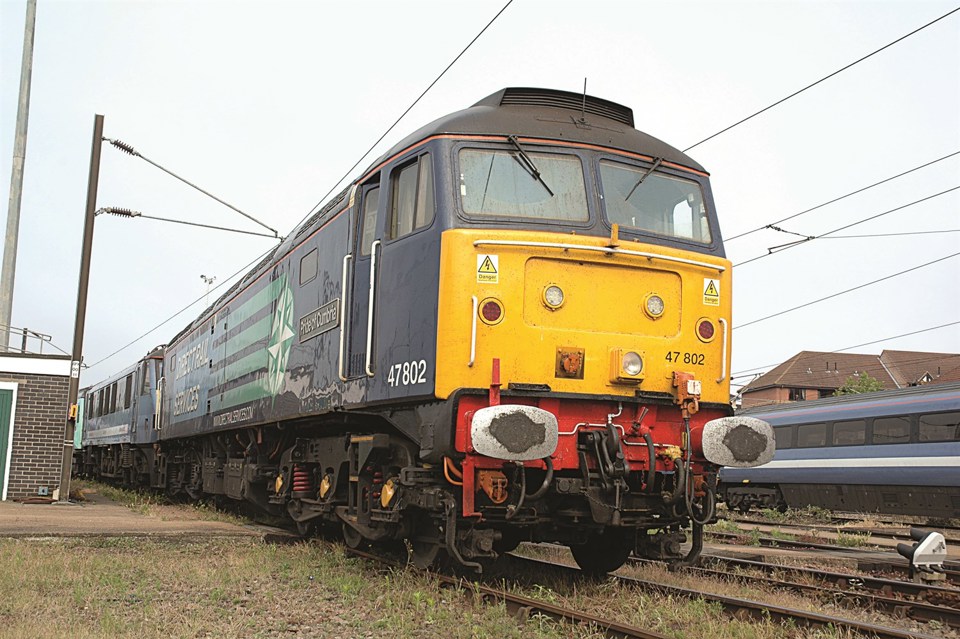
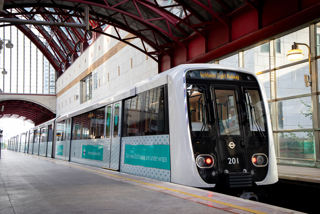
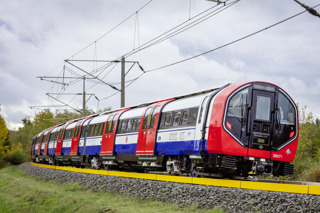
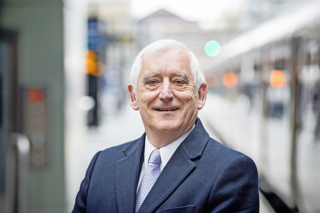
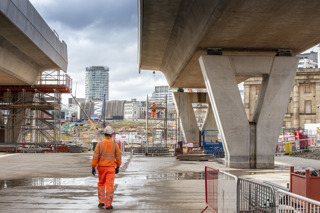
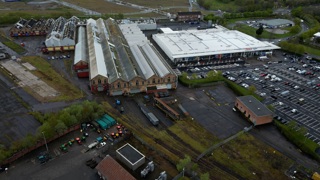











Login to comment
Comments
No comments have been made yet.